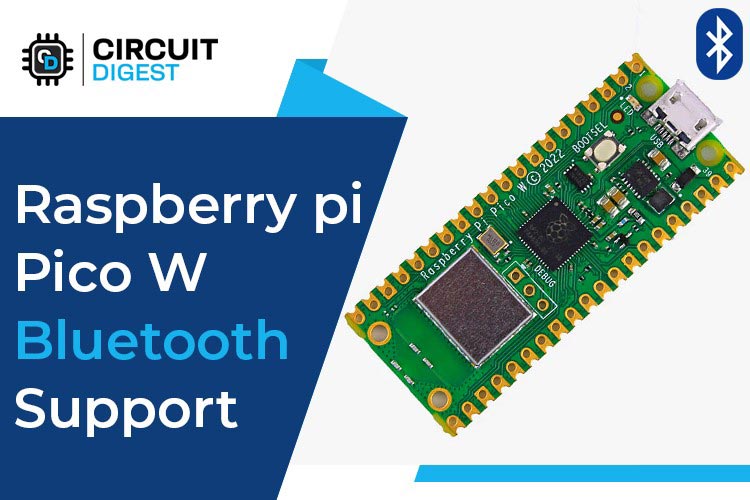
The Raspberry Pi Pico W is a versatile microcontroller board that packs a lot of power into its compact form factor. With the integration of Wi-Fi and Bluetooth capabilities, it opens up a world of possibilities for projects that require wireless communication.
Bluetooth C/C++ SDK Support
To make use of Bluetooth on the Pico W, the latest version of the Pico SDK (1.5.0) introduced Bluetooth functionality that was previously unavailable. This update brings various Bluetooth libraries that expand the capabilities of the Pico W when it comes to utilizing Bluetooth technology.
Here's an overview of the available Bluetooth libraries for the Raspberry Pi Pico W:
Bluetooth Classic: This library enables communication using traditional Bluetooth technology. It allows you to connect and communicate with other devices that support Bluetooth Classic, such as smartphones, computers, and other microcontrollers.
Bluetooth Low Energy (BLE): BLE is a power-efficient variant of Bluetooth designed for low-power devices. It enables you to create energy-efficient applications that can communicate with other BLE-enabled devices, such as fitness trackers, smartwatches, and IoT devices.
Bluetooth Sub Band Coding (SBC) encoding/decoding: This library provides audio encoding and decoding capabilities using the SBC codec. With this feature, you can stream audio wirelessly between the Pico W and other Bluetooth-enabled devices, such as speakers or headphones.
Bluetooth Network Encapsulation Protocol (BNEP) support using LwIP: BNEP support allows you to encapsulate network traffic over Bluetooth connections using the Lightweight IP (LwIP) stack. This feature enables you to establish network connections and exchange data between the Pico W and other Bluetooth devices.
Bluetooth Network Encapsulation Protocol (BNEP) support using LwIP with FreeRTOS for NO_SYS=0: This library offers BNEP support specifically for systems using the FreeRTOS operating system with the NO_SYS=0 configuration. It allows you to use BNEP over Bluetooth connections while leveraging the benefits of FreeRTOS.
These Bluetooth capabilities on the Raspberry Pi Pico W open up exciting possibilities for various projects. For example, you can create applications that involve audio streaming, where the Pico W acts as a Bluetooth audio source or receiver. You can also implement volume control functionality to adjust audio levels wirelessly. Additionally, you can explore projects that turn the Pico W into a Bluetooth keyboard or mouse, allowing it to interact with other devices.
To get started with Bluetooth on the Raspberry Pi Pico W, you'll need to follow the Pico SDK's quick-start instructions. These instructions provide guidance on setting up the necessary software tools and libraries to utilize Bluetooth features on the Pico W. Additionally, the Pico SDK documentation includes numerous Bluetooth examples that can serve as a reference for your own projects.
Note: - The Bluetooth support for pico W on Arduino IDE has yet not been confirmed or arrived.
Micropython Support
While MicroPython support for Bluetooth on the Pico W has not been officially released yet, there are indications that work is underway. Jim Mussared, the founder of MicroPython, has acknowledged the demand for Bluetooth support and mentioned active development efforts. This suggests that MicroPython support for Bluetooth on the Pico W may become available in the near future. To stay updated on the progress, you can monitor the relevant GitHub thread where the development is being discussed.
Once MicroPython support for Bluetooth is added to the Pico W, it will further enhance the accessibility of Bluetooth capabilities for a wider range of developers and enthusiasts. This will unlock even more exciting possibilities for creative projects, as it will enable developers to leverage the simplicity and ease of use offered by MicroPython while utilizing Bluetooth features on the Pico W.
In conclusion, the Raspberry Pi Pico W's integration of Wi-Fi and Bluetooth capabilities brings immense potential for wireless communication and opens up new avenues for innovative projects.





